
Benno Geiger, 1960s (photo Martin Hesse, Benno Geiger estate)
Benjamin Geiger, Roland Blaettler and Andreas Heege 2020
The following brief account is based on the references listed below and a biographical and family history overview written by Benjamin Geiger using the materials from Benno Geiger’s estate for an exhibition that was held in Matzendorf in 2019 (revised in May 2020).
Benno Geiger (1903-1979) had German and Swiss roots. He was born in Engelberg and grew up in Lugano. His parents were awarded citizenship of the municipality of Bosco Gurin in the Canton of Ticino in 1913. The Geiger family had a strong tradition of craftsmanship (ivory carvers, wood carvers, sculptors, master cabinet-makers). Benno studied modelling at the School of Arts and Crafts in Lugano.
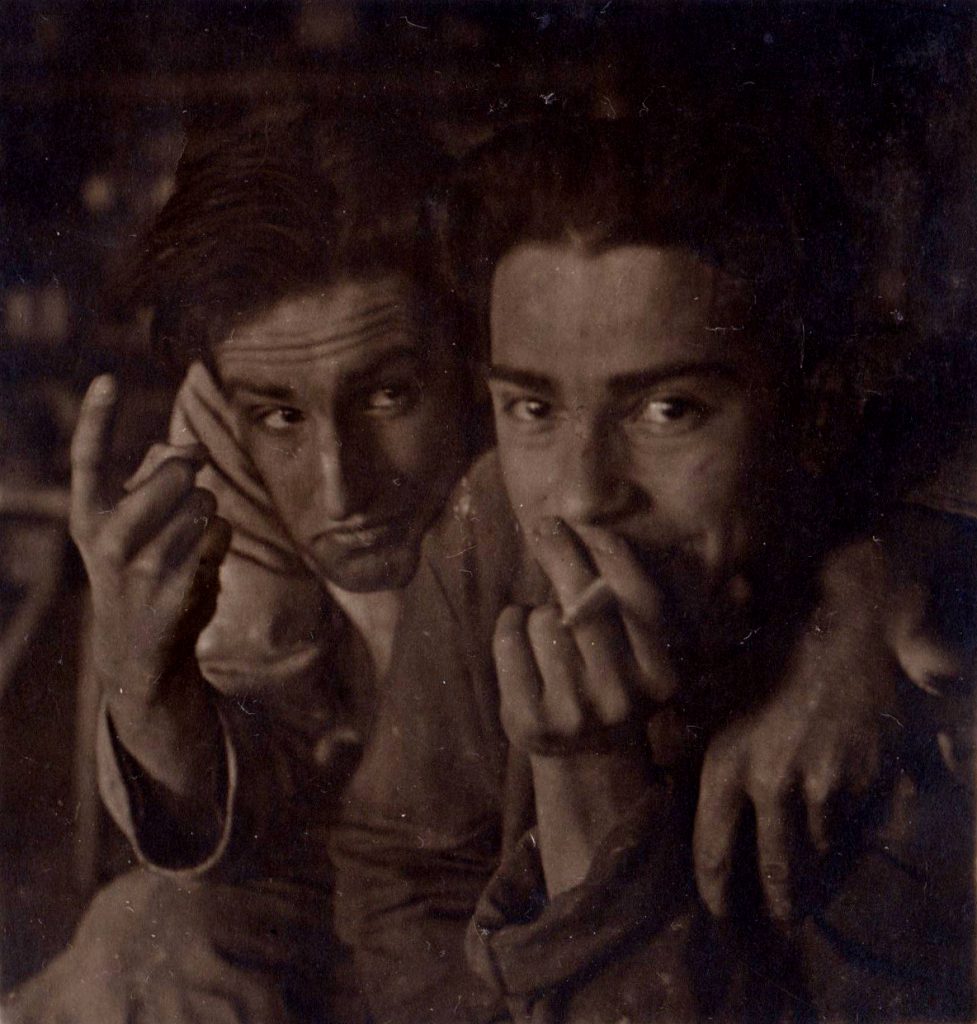
Benno Geiger (1903-1979) when he was employed at the Meister workshop in Dübendorf (photo archive Meister & Cie., Christine Hobi-Meister).
From November 1920 to 1922 he was the first apprentice to be trained as a potter by Heinrich Meister in Dübendorf (autobiographical manuscript from 1972 in the Geiger estate; also Kölliker 2014, 84-85).
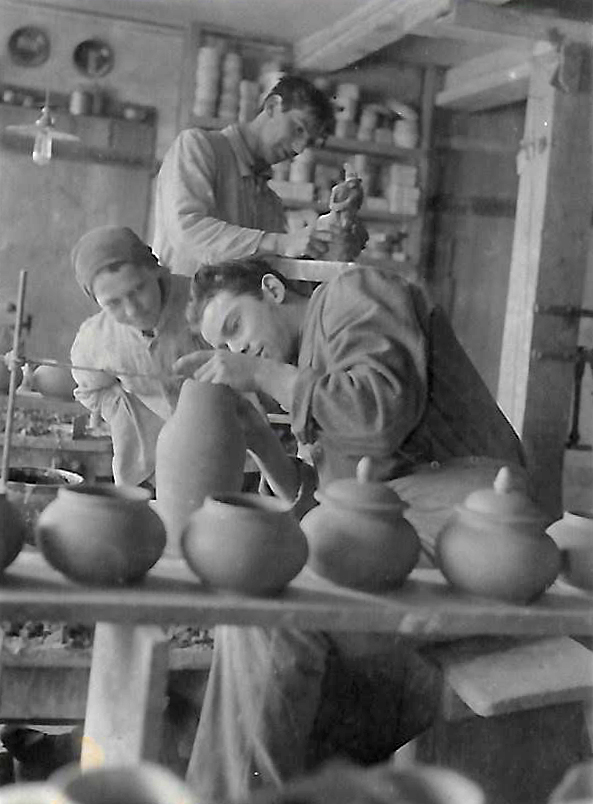
Benno Geiger, standing, modelling a figure at the Meister workshop (Benno Geiger estate).
In 1923, he continued his training in Munich-Schwabing with the Swiss ceramicist Paul Speck (1896-1966) before returning to work for Heinrich Meister from autumn 1923 to September 1925. A vase in the Ceramics Museum in Matzendorf, which is signed “Meister/Geiger” is from either this period or from 1927/1928 (KMM 485).
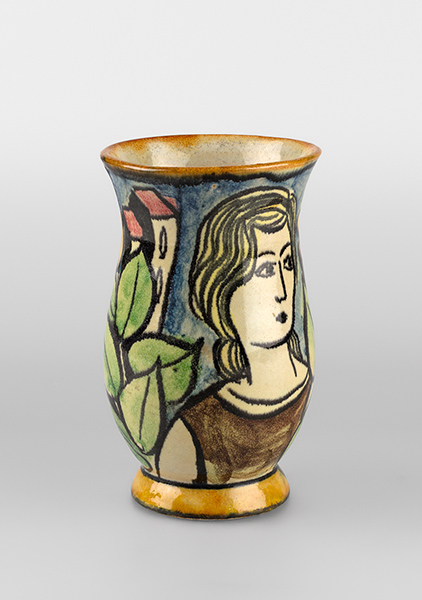

From autumn 1925 to October 1927, Benno Geiger studied under the Austrian ceramic designer and sculptor Michael Powolny at the Vienna School of Arts and Crafts and subsequently accepted low-paid short-term employment with Friedrich Goldscheider, before returning once again to Dübendorf to work for Heinrich Meister from 1927 to 1928 (see also Kölliker 2014, 85).


Benno Geiger’s skills appear to have made an impression in Vienna, as he was offered yet another position in the autumn of 1928. He accepted and in 1929 began work as Artistic Director of the Department of Modern Ceramics. Between then and 1933 he created numerous models at the Friedrich Goldscheider manufactory in Vienna (including KMM 486; see also Neuwirth 1974 and especially Dechant/Goldscheider 2007), where he learnt the important economic principle of producing different wares for different groups of buyers, which he himself called the “kitsch, semi-kitsch and high-end collections”.
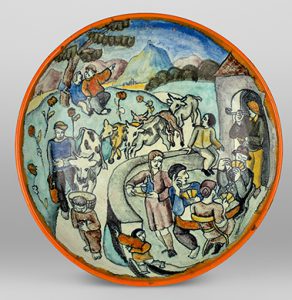

Bowl in the style of the Goldscheider period, probably from Geiger’s time in Vienna or from his very early period in Aedermannsdorf.
The Nazi takeover and boycotting of his employer in places like the Leipzig fair eventually prompted Benno Geiger to quit his post in May 1933. He left Vienna in the autumn of 1933.
From the end of 1933 until April 1934, he lived as a freelance artist in Paris. Upon his return to Switzerland he met Alfred von der Mühll, the owner of the pottery factory in Aedermannsdorf, who hired him to manage the art pottery department of his company from August 1934. The agreement was that the art pottery would bear the Aedermannsdorf factory mark but would be marketed as “Geiger pottery”. Geiger would design a highly artistic collection at least once a year, would be in charge of any orders that came in and would also make samples that were “not his usual wares in terms of their design or taste”. In return he would also have the use of the equipment to work on his own projects (work contract in the Geiger estate).
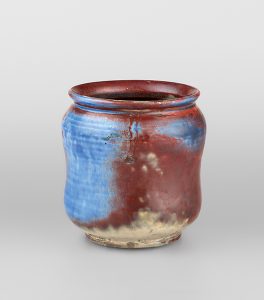
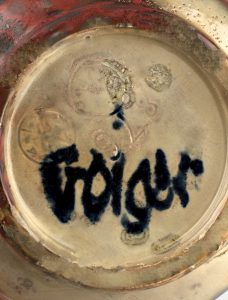
With the art pottery department that Director von der Mühll newly set up in 1934, the factory expanded its range of everyday pottery (Messerli 2017, 118-123). Geiger revived the faience technique and added insight gained from his own research, particularly with regard to smoke firing (e.g. KMM 460; KMM 349).
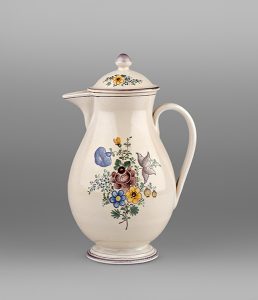
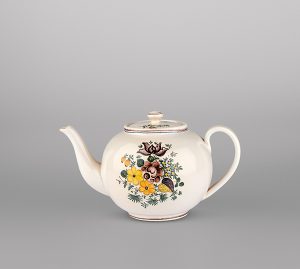
In the spirit of the Heimatstil (a historicist style of art and architecture) popular before and during the Second World War and to meet market demands, he also developed the so-called “Old Matzendorf” range and another with traditional Swiss costumes (e.g. KMM 510; KMM 403; KMM 497; KMM 410; KMM 493).

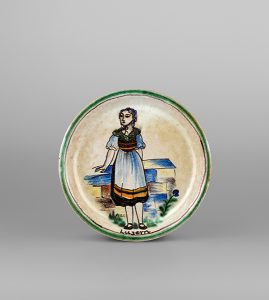
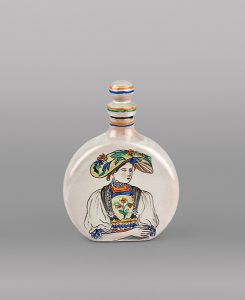

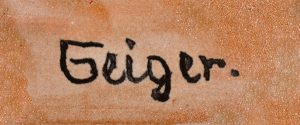
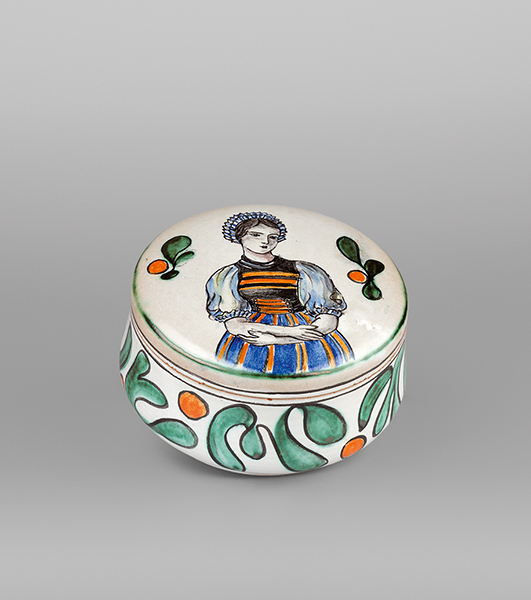
His incised decorations on both slipware and faience harked back to the past but were modernist in appearance at the same time (e.g. KMM 469; KMM 380; KMM 341).
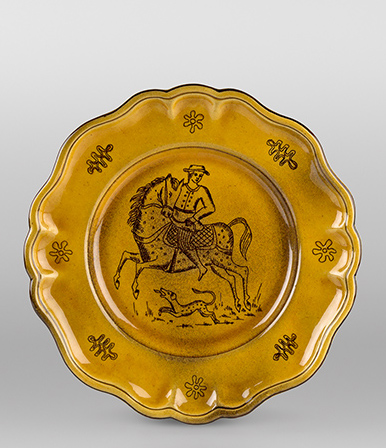
The employment in Aedermannsdorf finally provided Benno Geiger with the financial means to marry his long-term girlfriend, the ceramicist Eva Kowarcz, whom he had known since 1925. The wedding took place on 11th September 1935. They lived in Matzendorf until January 1939, when they moved to Basel and then Balsthal, before eventually settling in Bern.
In 1939, Geiger applied for the position of principal at the School of Ceramics in Bern. Its previous instructor and principal, Jakob Hermanns, had retired in 1937, passing away a year later (Messerli 2017, 107-108). However, the Bern Government Council decided on 24th March 1939 to close the school from 30th October, effectively putting an end to Geiger’s ambitions. It was only in response to considerable pressure from various sources (including the Swiss Association of Master Potters and Pottery Manufacturers) that the authorities revised their decision. In December 1940, the posts of director and of technical instructor were advertised once again and in 1941, Benno Geiger and Werner Burri were both hired. On 19th May 1941, the school reopened in Felsenburg Castle where it had been before, but moved to new and bigger premises at 63 Spitalackerstrasse in Bern on 1st November 1942 (Messerli 2017, 112). Benno Geiger’s tasks as director and pottery instructor were to oversee occupational studies, glazing and firing, and the 3rd year-class in the painting studio (i.e. the pottery paintresses). The topic of vocational schools will not be pursued any further here (see instead Messerli 2017, 107-123).
At that stage, Geiger had to reduce his presence at Aedermannsdorf to one day a week and later to half a day, giving it up completely in mid-1948. From then until his retirement in 1969, his focus centred on the school (Geiger 1952), the publication of easy-to-understand teaching materials (Geiger 1947; Geiger 1957), adjudicating duties, the Arbeitsgemeinschaft Schweizer Keramiker (Swiss Ceramics Association), numerous exhibitions (a list can be found in Schnyder 1985, 33-36) and, usually at weekends, his own “studio work”, which he continued with until his death in 1979.
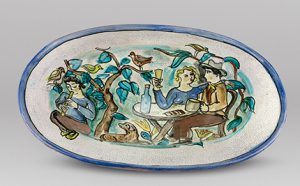
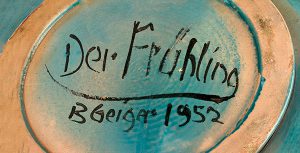
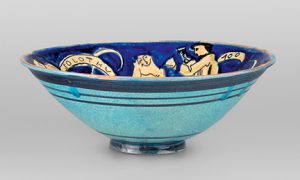
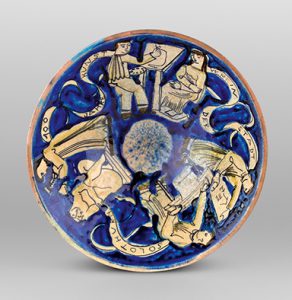

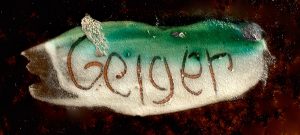
A significant number of these works (e.g. KMM 321; KMM 322; KMM 323; KMM 324) are in the collection of the Matzendorf Ceramics Museum, which staged two exhibitions in honour of Benno Geiger, the first in 1991 (Aedermannsdorf 1991) and the second in 2019.
His studio works also include numerous figurative works such as “The musicians”, which he created some time before 1957..

One of his outstanding works is a group of figures known as “The Judgement of Paris” (height of figures 42 cm, 33 cm and 32 cm):
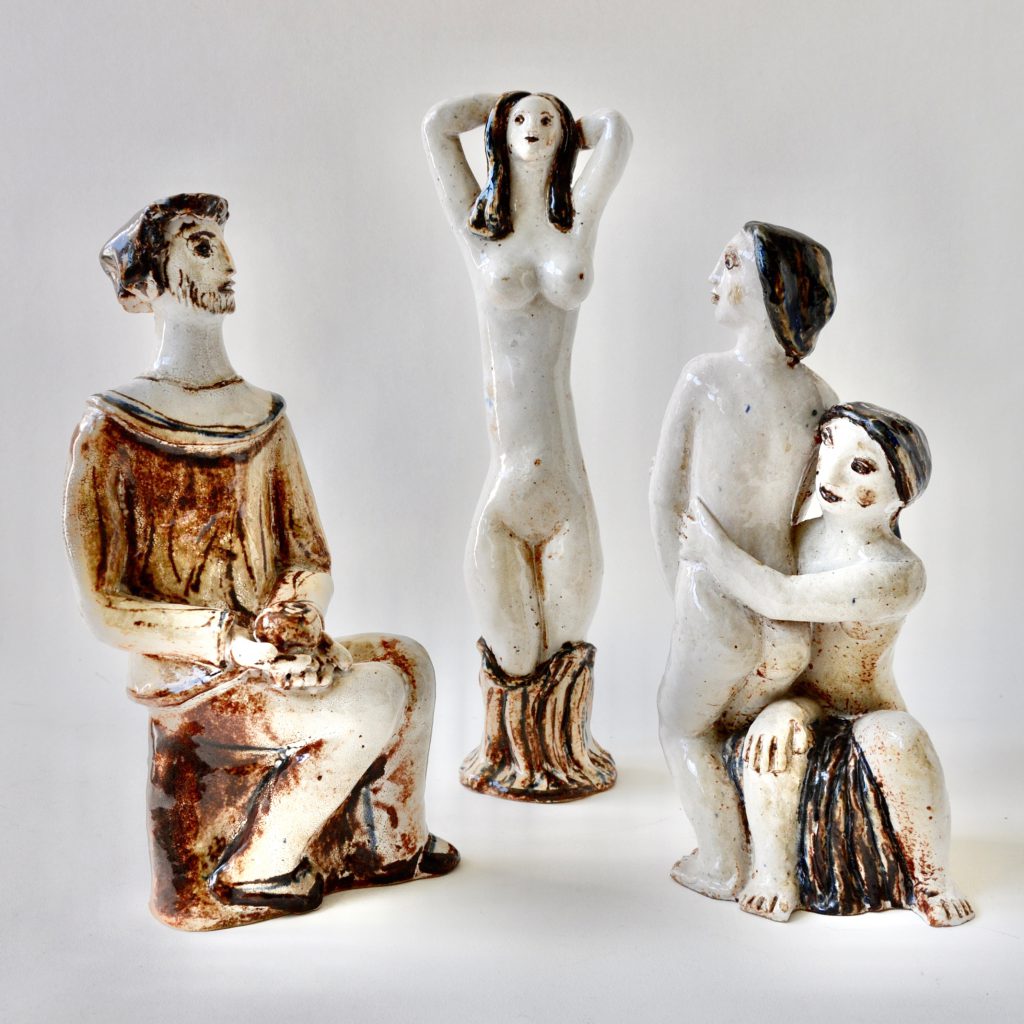
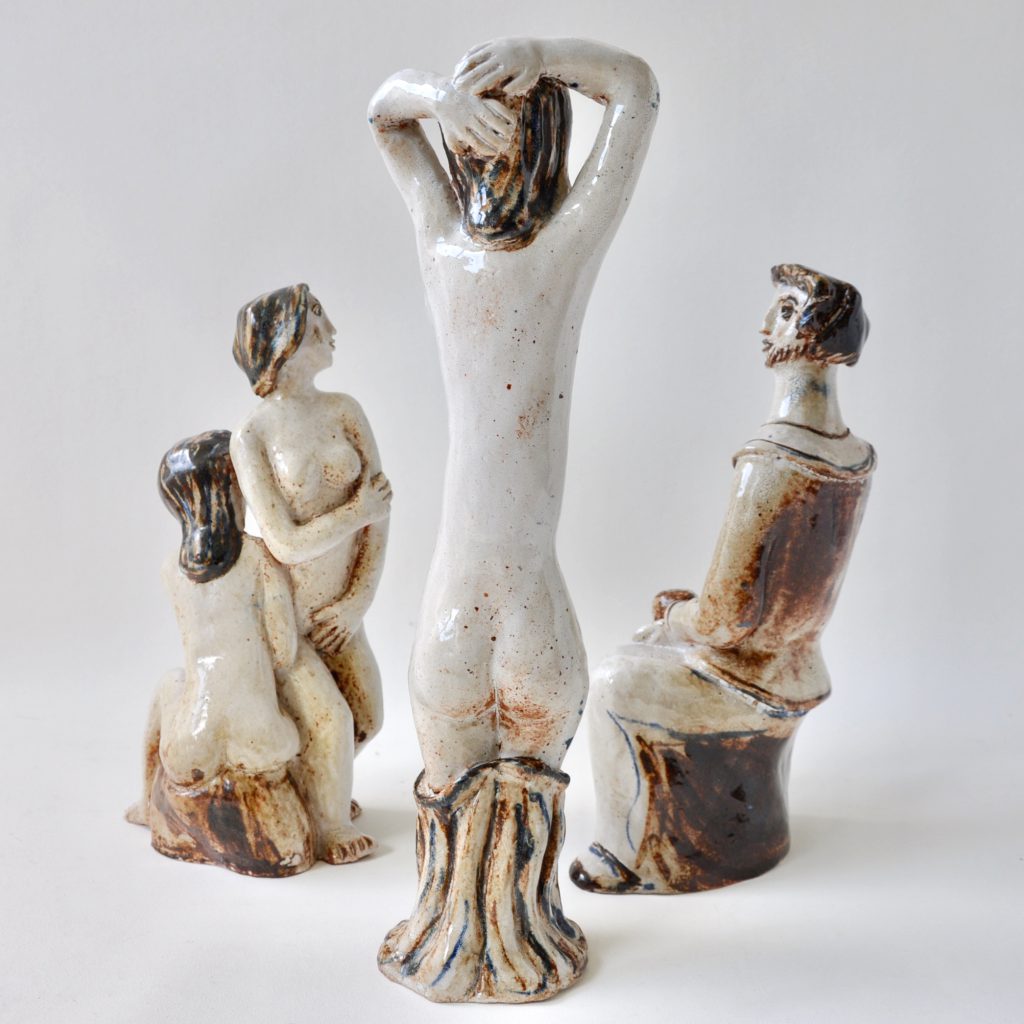
Photographs by Werner Singer, Uhwiesen, www.tabouret.ch (sincere thanks for the photos!)
Numerous ceramic objects by Benno Geiger were auctioned in 2017 by the Schuler Auction House in Zurich (sincere thanks for the photos) and most are now in the collection of the Matzendorf Ceramics Museum (see below). They are a reflection of the impressive range of Benno Geiger’s ceramic oeuvre. Besides Werner Burri, Geiger with his style and artistic ideas was an enormous inspiration to many a Swiss ceramicist and ceramic painter throughout his 28 years at the School of Ceramics.
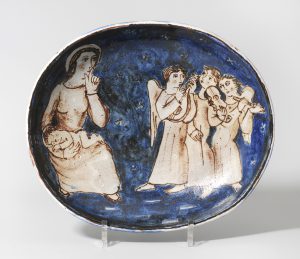
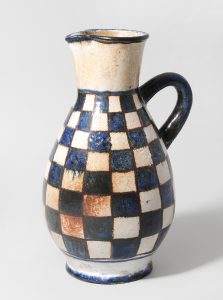
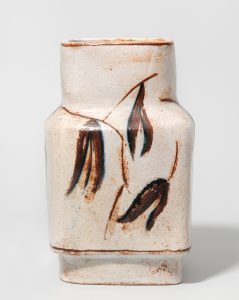
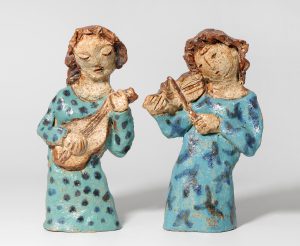


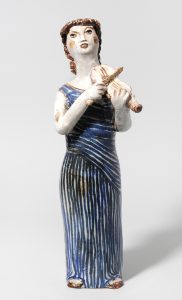
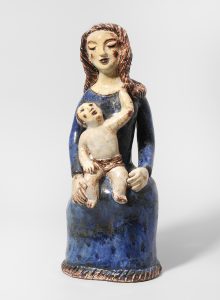
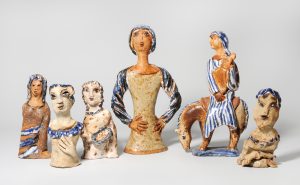


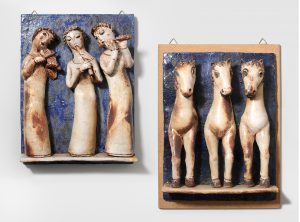

All objects in the collection of the Matzendorf Ceramics Museum (photos Schuler-Auktionen Zurich. Sincere thanks).
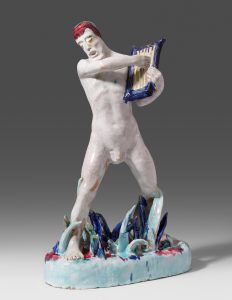
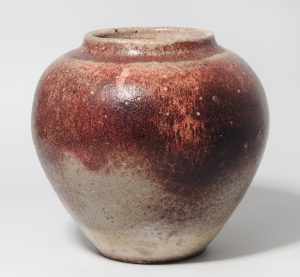
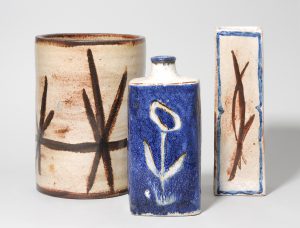

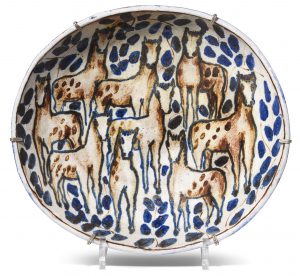
Translation Sandy Haemmerle
References:
Blaettler/Schnyder 2014
Roland Blaettler/Rudolf Schnyder, CERAMICA CH II: Solothurn (Nationales Inventar der Keramik in den öffentlichen Sammlungen der Schweiz, 1500-1950), Sulgen 2014, 40 und 356.
Dechant/Goldscheider 2007
Robert E. Dechant, Filipp Goldscheider, Goldscheider – Firmengeschichte und Werkverzeichnis. Stuttgart 2007.
Fachschule Bern 1960
Kunstgewerbemuseum Zürich (Hrsg.), Die Keramische Fachschule Bern und ihre Schüler – Kleine keramische Technologie, Schülerarbeiten, Arbeiten ehemaliger Schüler, Zürich 1960.
Aedermannsdorf 1991
Freunde der Matzendorfer Keramik (Hrsg.): Benno Geiger 1903-1979. Aedermannsdorf 1991.
Geiger 1947
Benno Geiger, Keramisches ABC, Bern 1947.
Geiger 1952
Benno Geiger, Keramische Fachschule Bern 1941 -1951, Bern 1952.
Geiger 1957
Benno Geiger, Keramisches Gestalten. Eine Anleitung mit über 300 Beispielen und vielen Anregungen für Laien und Fachleute (Hochwächter-Bücherei Band 19), Bern 1957.
Geiger 1967
Martin Geiger, Ein Gespräch mit dem Keramiker Benno Geiger, in: Das Werk. Architektur und Kunst 54, 1967, 799-802.
Kölliker 2014
Richard Kölliker, Meister-Keramik – Heinrich und Gertrud Meister-Zingg und ihre Kunstkeramik Werkstatt in Dübendorf-Stettbach 1920–1961. Selbstverlag., Schaffhausen 2014.
Messerli 2017
Christoph Messerli, 100 Jahre Berner Keramik, von der Thuner Majolika bis zum künstlerischen Werk von Margrit Linck-Daepp (1987-1983). Hochschulschrift (Datenträger CD-ROM), Bern 2017.
Neuwirth 1974
Waltraut Neuwirth, Wiener Keramik. Historismus, Jugendstil, Art Déco, Braunschweig 1974.
Schnyder 1985
Rudolf Schnyder, Vier Berner Keramiker: Werner Burri, Benno Geiger, Margrit Linck, Jakob Stucki. Ausstellungskatalog im Rahmen der 10. Spiezer Keramik-Ausstellung, Schloss Spiez. Bern 1985, 33–51.
Vogt 2000
Albert Vogt Die Geschichte der keramischen Industrie in Matzendorf und Aedermannsdorf 1798-1998. In: Verein «Freunde der Matzendorfer Keramik» (Hsg.), 200 Jahre keramische Industrie in Matzendorf und Aedermannsdorf 1798-1998. Matzendorf, 9-90.

